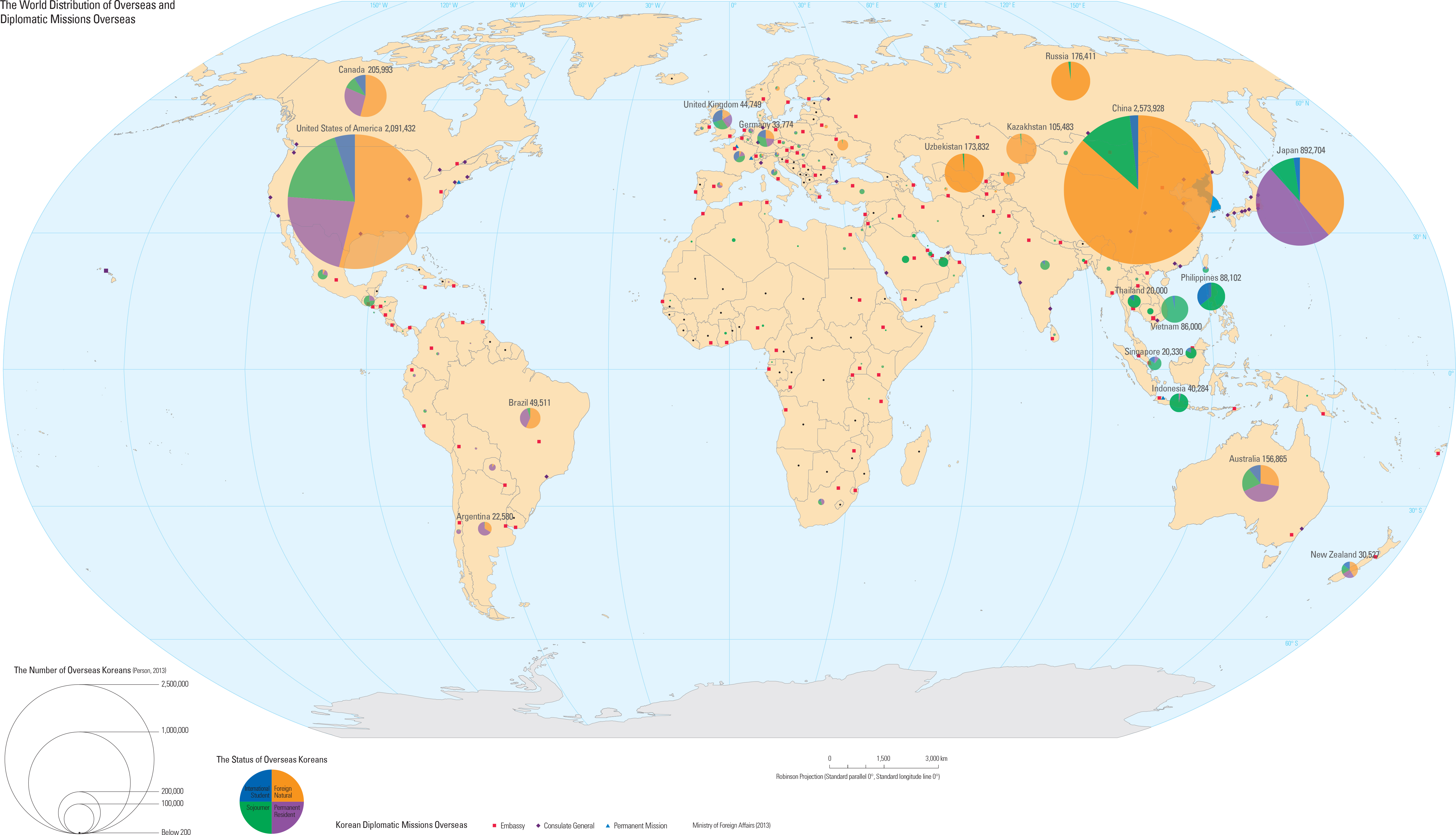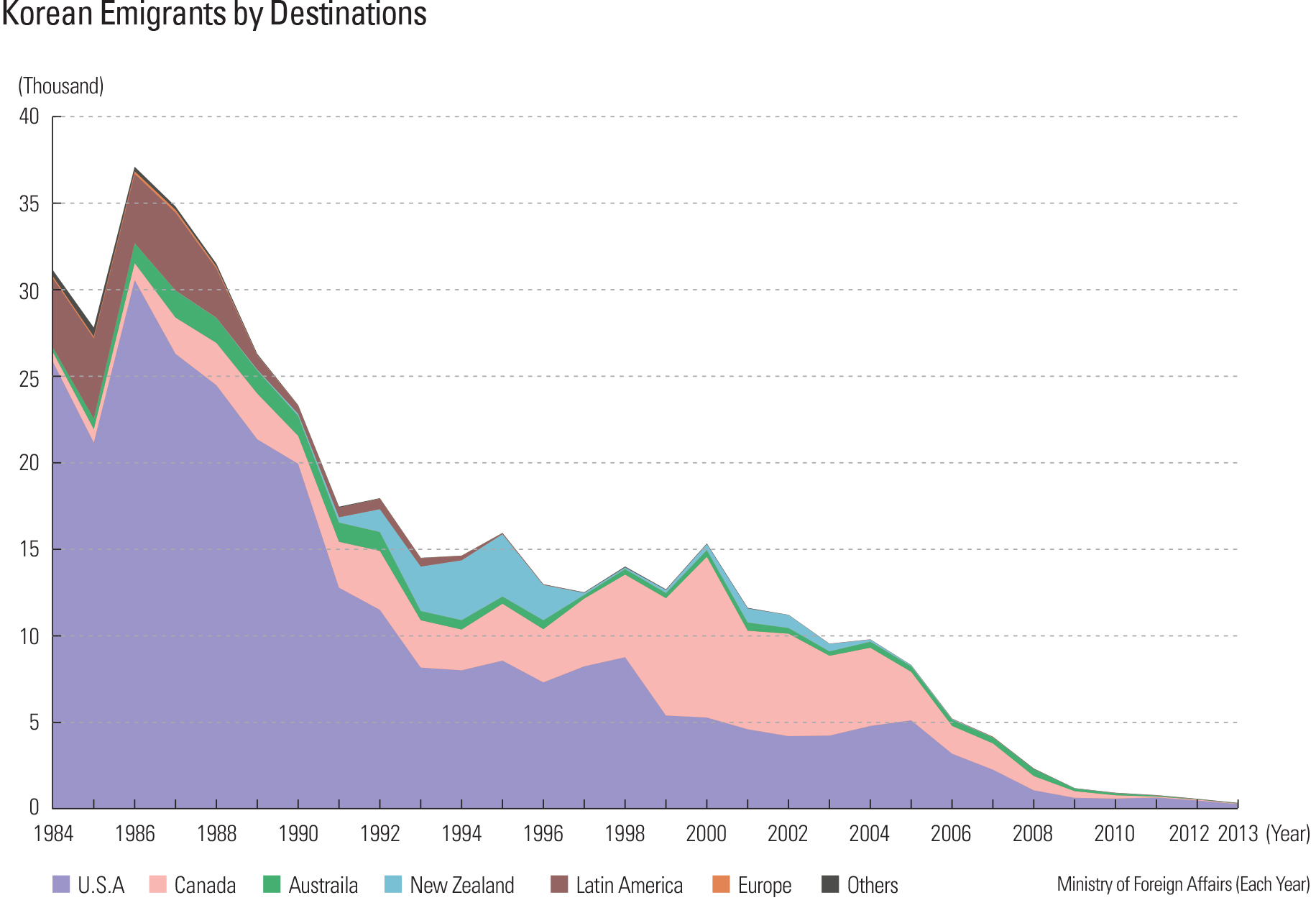The map shows the worldwide distribution of Korean diplomatic missions overseas. The diplomatic missions overseas are grouped into embassies, missions and consulate generals. Embassies are set up in the capital of a country with whom Korea has established diplomatic relations. Permanent missions are set up within an international organization that Korea joins. Consulate Generals are opened wherever a large number of Koreans reside overseas. At present the Korean government manages 113 resident embassies, 5 permanent missions, and 43 consulate generals across the 190 countries with whom Korea maintains diplomatic relations. Many consulate generals are found in North America and Asia because Korea has close relationships there, particularly with the US, Japan, and China, and because many Koreans live in these regions. The number of diplomatic missions overseas abroad constantly increased until 1997. The Asian financial crisis in 1997, however, forced South Korea to close 22 such establishments. Later, the number rebounded back to the previous level as the economy recovered. This indicates that the number of diplomatic missions overseas is dependent on socio-economic conditions. North Korea, on the other hand, has 47 resident embassies, 4 permanent missions, and 3 consulate generals.
The map also presents the geographic distribution of Koreans living overseas according to data collected by Korean diplomatic missions overseas. They are divided into Korean nationals who have Korean citizenship and foreign nationals who have foreign citizenship. The overseas Korean nationals are further divided into permanent residents, international students, and sojourners. The number of overseas Koreans increased sharply in 1991 because it started to count the Korean-Chinese population for the first time. A gradual increase appears after 1991. Currently, the number of overseas Koreans is close to 7 million, and of that total 1.1 million are permanent residents, 1.2 million are sojourners, 0.3 million are international students, and 4.4 million are foreign nationals. The graph shows the temporal changes of Korean emigrants in terms of their destinations and goals. The number of the emigrants decreased dramatically between 1984 to 2013 due to economic growth and democratization. Until the late 1980s, most emigrants moved to the US, but many also moved to Latin American countries. After the Seoul Olympic Games in 1988, Latin America emigration decreased while emigration to English-speaking countries such as Canada, Australia, and New Zealand increased, resulting in an increasingly diverse distribution. The top reason given for emigration was family reunification, followed by employment and personal business opportunities.



